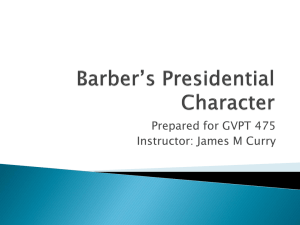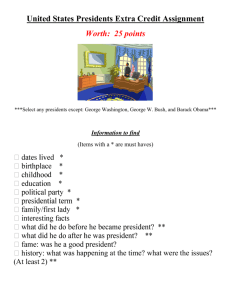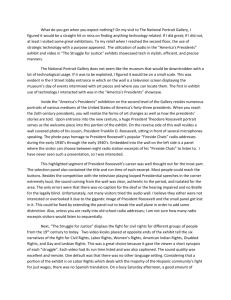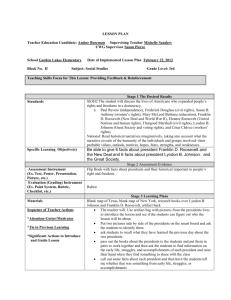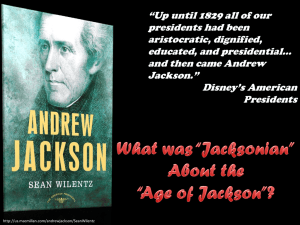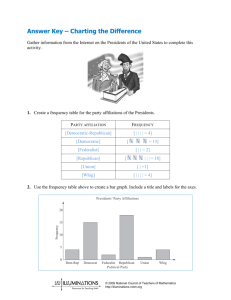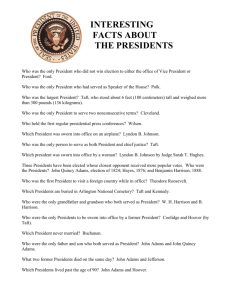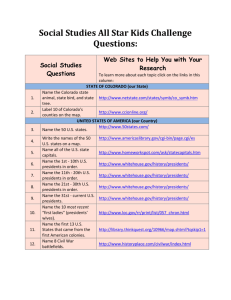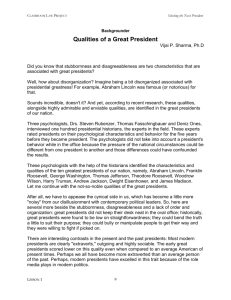Understanding_and_Evaluating_Presidents
advertisement
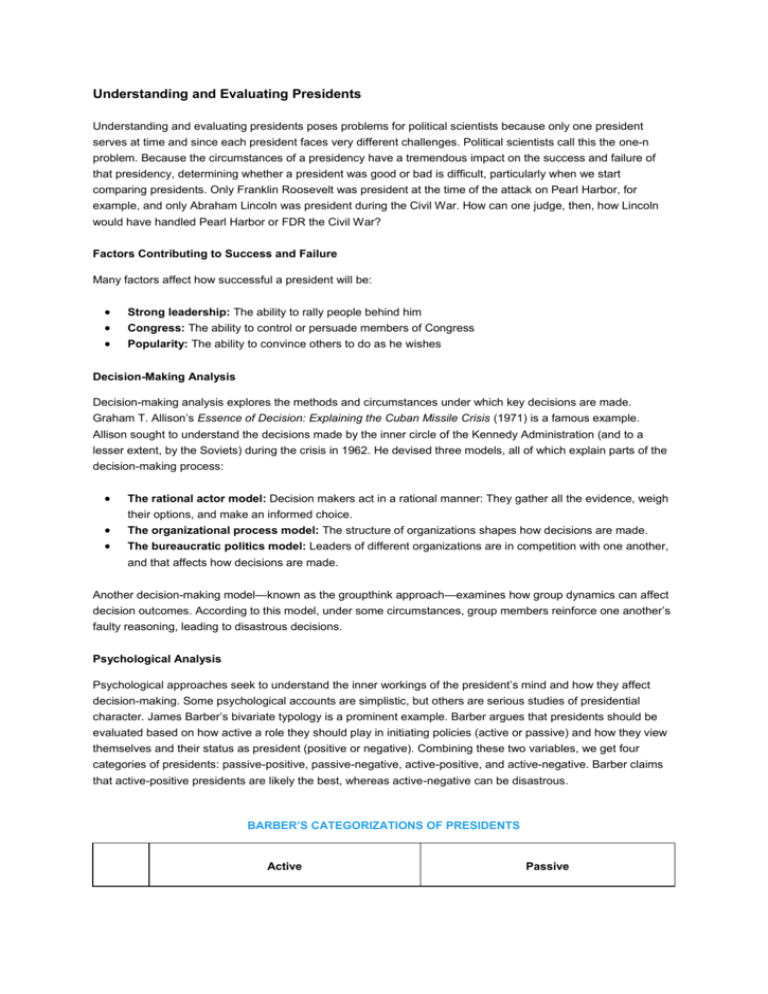
Understanding and Evaluating Presidents Understanding and evaluating presidents poses problems for political scientists because only one president serves at time and since each president faces very different challenges. Political scientists call this the one-n problem. Because the circumstances of a presidency have a tremendous impact on the success and failure of that presidency, determining whether a president was good or bad is difficult, particularly when we start comparing presidents. Only Franklin Roosevelt was president at the time of the attack on Pearl Harbor, for example, and only Abraham Lincoln was president during the Civil War. How can one judge, then, how Lincoln would have handled Pearl Harbor or FDR the Civil War? Factors Contributing to Success and Failure Many factors affect how successful a president will be: Strong leadership: The ability to rally people behind him Congress: The ability to control or persuade members of Congress Popularity: The ability to convince others to do as he wishes Decision-Making Analysis Decision-making analysis explores the methods and circumstances under which key decisions are made. Graham T. Allison’s Essence of Decision: Explaining the Cuban Missile Crisis (1971) is a famous example. Allison sought to understand the decisions made by the inner circle of the Kennedy Administration (and to a lesser extent, by the Soviets) during the crisis in 1962. He devised three models, all of which explain parts of the decision-making process: The rational actor model: Decision makers act in a rational manner: They gather all the evidence, weigh their options, and make an informed choice. The organizational process model: The structure of organizations shapes how decisions are made. The bureaucratic politics model: Leaders of different organizations are in competition with one another, and that affects how decisions are made. Another decision-making model—known as the groupthink approach—examines how group dynamics can affect decision outcomes. According to this model, under some circumstances, group members reinforce one another’s faulty reasoning, leading to disastrous decisions. Psychological Analysis Psychological approaches seek to understand the inner workings of the president’s mind and how they affect decision-making. Some psychological accounts are simplistic, but others are serious studies of presidential character. James Barber’s bivariate typology is a prominent example. Barber argues that presidents should be evaluated based on how active a role they should play in initiating policies (active or passive) and how they view themselves and their status as president (positive or negative). Combining these two variables, we get four categories of presidents: passive-positive, passive-negative, active-positive, and active-negative. Barber claims that active-positive presidents are likely the best, whereas active-negative can be disastrous. BARBER’S CATEGORIZATIONS OF PRESIDENTS Active Passive Positive Negative Franklin Roosevelt, Harry S Truman, John F. Kennedy Ronald Reagan, William Howard Taft, James Madison Lyndon Johnson, Richard Nixon, Herbert Hoover, George Washington, Dwight Eisenhower, Woodrow Wilson George H. W. Bush Historical Comparison Some scholars compare presidents by the role they play in history. For example, some see FDR as particularly significant because he framed the terms of debate in the United States for decades to come. Other studies examine the lasting impact a president had by studying how much of what he did survived their presidencies. Again FDR is significant under this criteria because his New Deal still exists. The Best and Worst Scholars and historians debate about the best and worst presidents in American history. Although there is no consensus, there is a general agreement as to who should be considered great. This list includes Presidents Abraham Lincoln, Franklin D. Roosevelt, George Washington, Thomas Jefferson, and Theodore Roosevelt.
